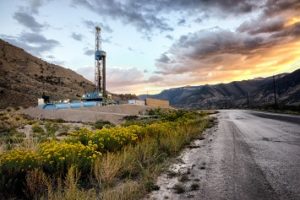Oil and gas (O&G) companies may get an opportunity to expand development operations in Idaho if the EPA finalizes a proposal to take over the state’s Underground Injection Control (UIC) Program for Class II wells. Currently, the state and its Department of Water Resources (IDWR) have not received approval from the EPA to issue Class II permits.
On August 25, 2017, the EPA received a letter from the IDWR formally requesting that the Agency transfer and directly implement the Class II UIC Program in Idaho. Class II injection wells inject fluids (1) that are brought to the surface in connection with natural gas storage, or oil or natural gas production; or (2) for the purpose of enhanced oil or natural gas recovery; or (3) for the storage of hydrocarbons, which are liquid at standard temperature and pressure.
Wells banned in 1985
The EPA approved Idaho’s application for primary implementation and enforcement authority (primacy) for Class I, II, III, IV, and V injection wells under the Safe Drinking Water Act (SDWA) on July 22, 1985. Idaho has since maintained primacy for these injection well classes, including Class II. However, Class II injection wells were banned in the state’s regulations in 1985, and as a result, this ban was codified in EPA’s regulations.
However, in 2013, the state passed legislation that allows these wells. Although the state’s regulations now allow Class II wells, Idaho has not issued any Class II permits because the EPA has not approved the change to Idaho’s approved Class II UIC Program, and the wells remain banned under federal law; therefore, the state is not authorized to issue Class II permits.
The voluntary transfer of authority for the UIC Class II Program to the EPA would allow the EPA to issue Class II permits in Idaho. The EPA would be responsible for the direct implementation of the Class II underground injection program in Idaho, including permitting, compliance, and enforcement responsibilities, pursuant to the SDWA and federal UIC regulations.
Low earthquake risk
According to the news media, O&G companies cite the inability to obtain Class II permits as the principle hindrance to energy development in Idaho. One company said it must truck out its wastewater, which is a far costlier approach than underground injection. Some geologists cite injection of O&G wastewater into Class II wells as the cause of many small and moderate earthquakes in Oklahoma. A spokesperson with one company said this should not be a concern in Idaho where the geology in O&G fields is mainly shale formations, in contrast to sand formations in Oklahoma, which are more prone to react seismically when filled with large quantities of wastewater.
EPA’s proposed transfer of the UIC Program from Idaho was published in the November 27, 2017, FR.

